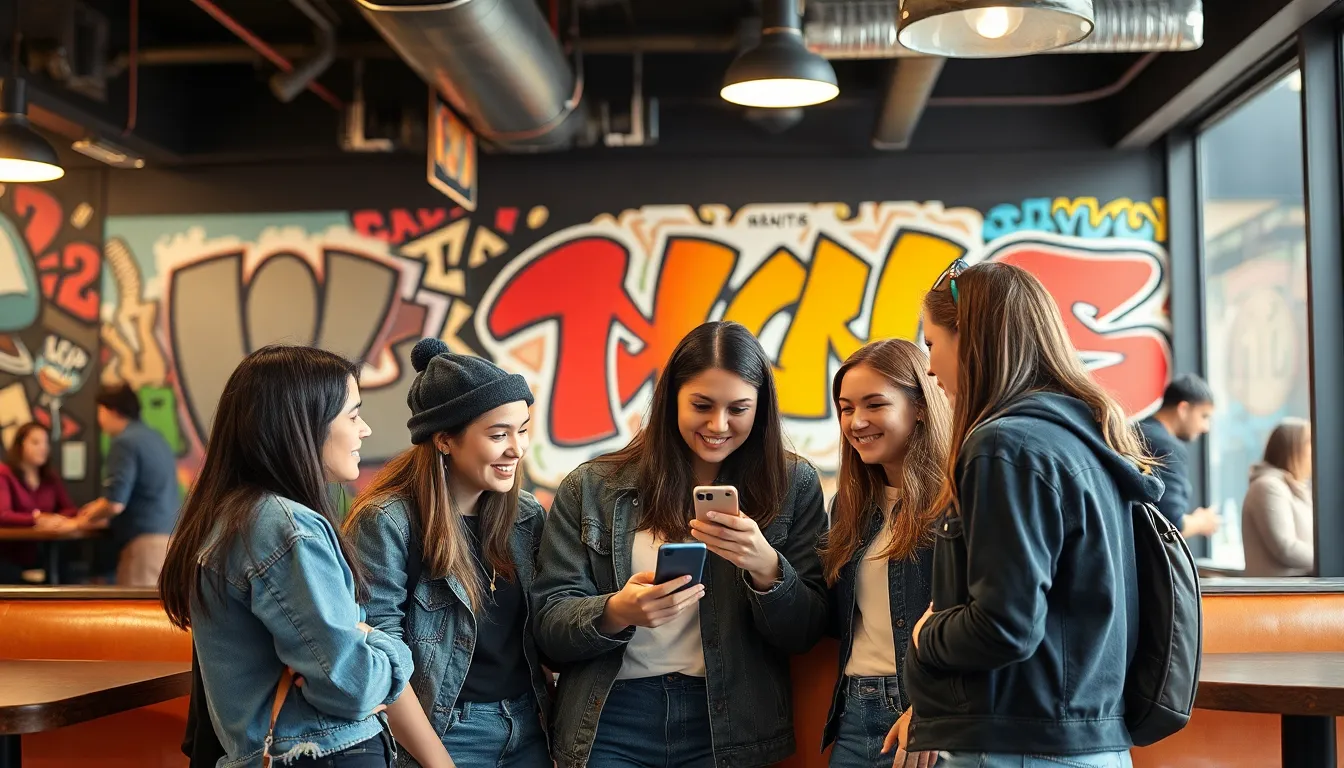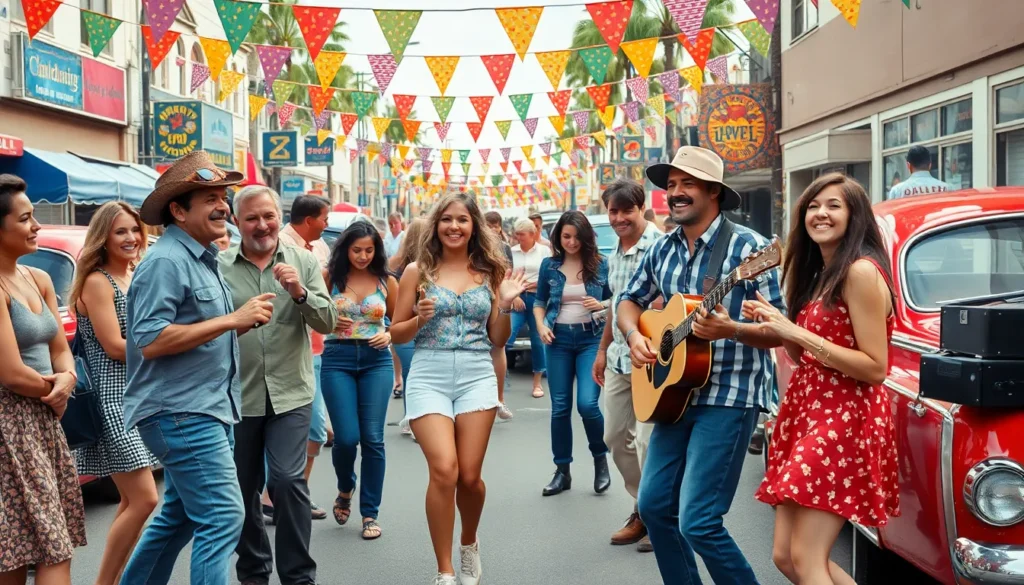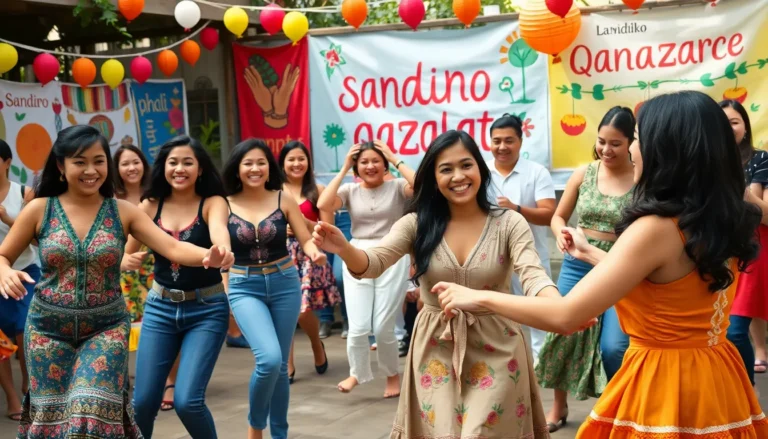Imagine waking up one day to find that four decades of vibrant culture has vanished into thin air. Sounds like a plot twist from a bad sci-fi movie, right? But for many, this is the reality they’re grappling with. From iconic music to unforgettable fashion trends, the cultural tapestry that once defined an era now feels like a distant memory.
As nostalgia sweeps in like a warm blanket, it’s hard not to chuckle at the absurdity of it all. How did we go from disco balls to digital screens? This article dives into the whirlwind of change and the quirky moments that shaped the last 40 years. Buckle up for a journey that’s both enlightening and entertaining, because when culture disappears, it leaves behind a treasure trove of stories worth telling.
Table of Contents
ToggleOverview of Cultural Shift
The past forty years witnessed significant changes in cultural dynamics, resulting in the disappearance of once-vibrant elements like music and fashion. Nostalgia permeates discussions about this period, revealing a collective longing for the styles and sounds that shaped identities. Iconic trends from the late 20th century now seem distant, making room for modern digital influences that redefine societal norms.
Heavily influenced by technological advancements, today’s culture leans towards instant gratification and virtual experiences instead of the communal gatherings of the past. Music shifted from live, in-person concerts to streaming services, altering how communities engage with artists. Fashion, once characterized by bold expressions and defined subcultures, has transitioned to fast fashion trends driven by global brands, diminishing individual flair.
Social media platforms emerged as pivotal spaces for cultural expression, changing how people connect and communicate. Unlike previous decades, where shared experiences shaped popular culture, individuals now curate personal brands, often favoring selfies over social interactions. Once collaborative artistic movements have transformed into isolated, individual endeavors, leading to a more fragmented cultural landscape.
This shift manifests in varied areas, including entertainment and art, where traditional mediums face competition from digital content. With films and music readily accessible, consumption habits evolved, causing a decline in appreciation for the craftsmanship of earlier works. While these changes reflect progress, they also signal a cultural erosion, prompting questions about the stories left behind during this transition. Events that once fostered unity now appear overshadowed by the rapid pace of modern life.
The Impact of Societal Changes

Cultural changes over the past 40 years reveal profound impacts on society. Traditional cultural elements like music and fashion have diminished, giving way to emerging trends.
Technology’s Role in Cultural Disappearance
Technology significantly influences cultural shifts. Digital platforms prioritize instant access to content, overshadowing the experience of live events. Streaming services replaced concerts, causing a lack of community in music appreciation. Easy access to trends results in fast fashion dominating the market, often at the expense of personal expression. Craftsmanship in art wanes as digital content rises, leading to a culture less appreciative of skilled artistry. These technological changes drive the erosion of once-vibrant cultural practices.
Changes in Social Interaction
Social interaction transformed in the digital age. Physical gatherings declined as social media emerged as a primary means of communication. People now prioritize online presence over face-to-face connections. This shift cultivates a fragmented cultural landscape, where personal branding takes precedence. Genuine interactions often suffer as individuals select curated moments to share online. The result is a more superficial exchange of ideas and experiences, diluting the richness of community bonds. Adjustments in social behavior reflect significant changes in collective identity and cultural cohesion.
Preserving Cultural Heritage
Cultural heritage preservation is vital to maintaining the identity and history of communities. Effective documentation serves as a cornerstone for this effort.
Importance of Documentation
Documenting cultural elements ensures historical accuracy and enables future generations to connect with their lineage. Various methods, such as recording oral histories, creating archives, and photographing artifacts, contribute to this preservation. Archival collections provide insights into past lifestyles and traditions, helping to sustain community narratives. Reports by organizations like UNESCO highlight documentation’s role in fostering cultural awareness and appreciation. These efforts not only honor the past but also enrich the cultural dialogue across generations.
Role of Communities in Preservation
Communities play a crucial part in the preservation process by actively engaging in cultural activities. Participation in local events, celebrating traditional festivals, and practicing crafts fosters a sense of belonging. Grassroots initiatives often mobilize individuals to safeguard local customs and heritage. Collaborative projects, such as cultural festivals and workshops, embody community spirit and encourage knowledge sharing. Engaging youth in preservation activities helps bridge generational gaps, ensuring that traditions continue to thrive. Community-driven efforts often receive support from local governments and organizations, amplifying their impact and reach.
The Future of Cultural Identity
Cultural identity faces unprecedented challenges due to rapid technological advancements. The decline of traditional forms of expression mirrors a broader societal shift. Preservation of cultural heritage remains vital in fostering community connections. Events that celebrate traditions offer platforms for shared experiences, essential for maintaining identity.
Emerging trends often overshadow established customs. Digital content’s rise fosters a sense of immediacy, yet diminishes depth in cultural appreciation. Individuals increasingly prioritize online interactions over face-to-face gatherings. With this shift, genuine connections become scarce.
Youth engagement plays a crucial role in cultural preservation. They often bridge generational divides, keeping traditions alive through participation. Local initiatives encourage knowledge sharing, allowing communities to retain their unique narratives. Documentation efforts, like collecting oral histories, serve as vital links to the past.
Cultural landscapes continue evolving, influenced by shifting norms. Though technology facilitates access, it risks reducing the value of skilled artistry. Events that draw people together foster an appreciation for craftsmanship and authenticity. This appreciation can counteract the trend toward superficial engagement.
Ultimately, the importance of cultural identity endures, even as society transforms. Communities that actively engage in preservation efforts help shape the future. Individuals and groups must remain vigilant in documenting and celebrating their heritage. This collective effort ensures that the narratives of the past inform the direction of culture moving forward.
The past four decades have seen a dramatic transformation in cultural identity, with vibrant expressions fading into the background. As technology reshapes experiences and social interactions, the essence of community and shared traditions faces significant challenges.
Preserving cultural heritage is more crucial than ever. Local initiatives and youth engagement can help bridge generational gaps, fostering a sense of belonging and continuity. While the digital age brings its own set of influences, the importance of authentic cultural expression remains vital for future generations.
Communities that prioritize preservation efforts can ensure that the rich narratives of the past continue to inform and inspire the evolving cultural landscape.





